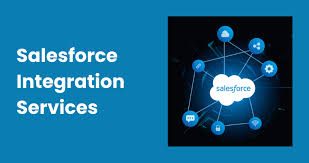Salesforce Solutions in India are becoming essential for businesses that want to streamline processes, improve customer experiences, and boost operational efficiency. With more companies adopting cloud-based CRM platforms, the demand for expert Salesforce consultants, developers, and implementation partners is increasing rapidly across the country.
Why More Indian Companies Are Choosing Salesforce
Businesses are switching to digital faster than ever, and they need CRM platforms that can grow with them. That’s where Salesforce comes in — it’s flexible, packed with automation, and gives you data in real time. Because of that, the need for Salesforce consulting in India has shot up. Companies want to boost their efficiency without getting tangled in tech headaches.
Here’s what’s driving this shift:
- Teams working remotely or in hybrid setups
- The need to keep all customer info in one place
- Faster decisions and smarter forecasts
- A big push for automation across every department
How Salesforce Consultants in India Make a Difference
Running a successful CRM project isn’t easy — you need people who really know their stuff. Salesforce consultants in India play a key role for companies that want to get the most out of the Salesforce platform.
What Do Consultants Actually Do?
- Design CRM workflows that fit your business
- Make sure Salesforce plays nice with your other systems
- Train your team and offer ongoing support
- Help your staff get the most out of automation
On top of that, they give industry-specific advice so your CRM does exactly what you need.
Why Companies Team Up with Salesforce Consulting Partners in India
When you work with experienced Salesforce consulting partners, you get more than just advice. These teams bring certified pros and architects who know how to speed up digital transformation and avoid common mistakes.
Here’s what you get out of it:
- Fewer project hiccups
- Faster setup
- Solutions tailored to your business
- Experts handling tough integrations
How Salesforce Developers in India Push Innovation Forward
Every successful CRM project needs a sharp development team. The right Salesforce developer in India builds custom workflows, Lightning components, and new features that really make the system shine.
Here’s what these developers bring to the table:
- Custom apps built for your needs
- Smart API integrations
- Automated workflows
- Better user interfaces
They make sure Salesforce fits your business like a glove.
Looking Ahead: What’s Next for Salesforce in India
As more companies go digital, Salesforce will only get bigger in India. With strong support from consultants and developers, businesses can build CRM systems that are flexible, smart, and ready for whatever comes next.
FAQs
- Why do businesses in India go with Salesforce?
Because it’s automated, gives great customer insights, and you can tweak it for any industry. - Do Indian companies need Salesforce consultants?
Yes. Consultants handle planning, customizing, setting up, and supporting your CRM so everything runs smoothly. - What does a Salesforce developer in India actually do?
They build custom features, integrations, and automations to match what your business needs. - Is Salesforce affordable for small and medium businesses?
Definitely. Salesforce has plans that work for companies of all sizes.




